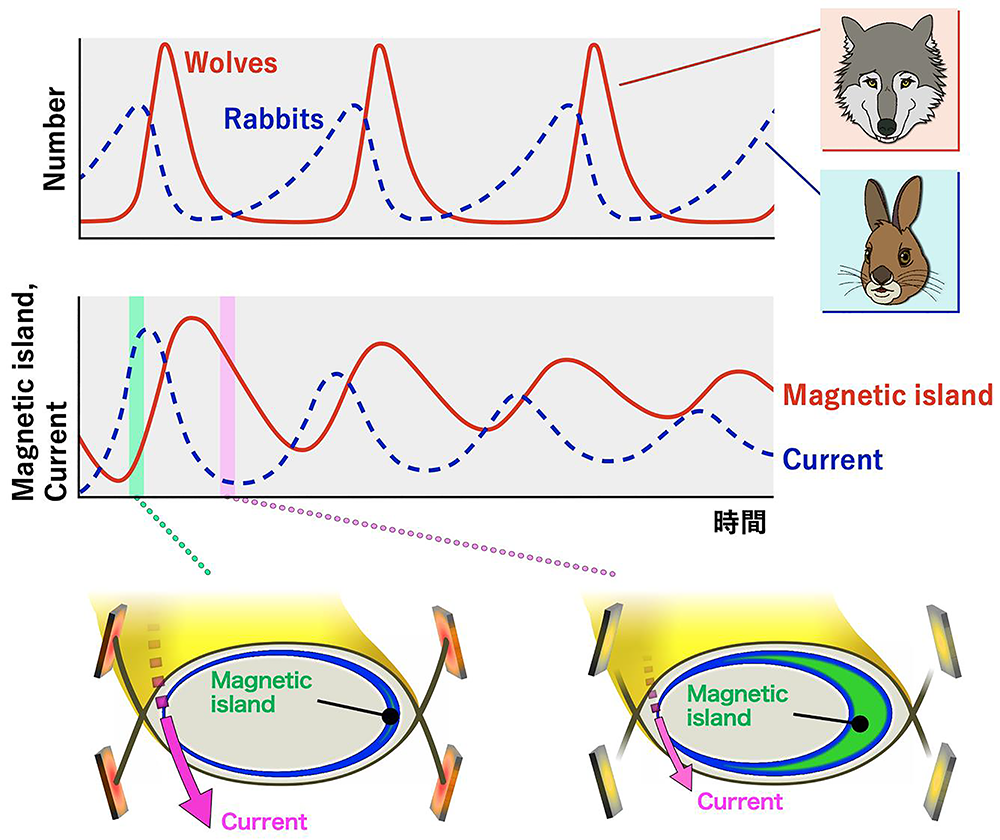Predator and prey relation in peripheral plasmas
When the so-called magnetic island, an isolated magnetic field structure embedded in nested tori, is formed, the plasma heat load onto the surrounding materials is significantly mitigated. We discovered a self-sustained oscillation of the magnetic island and heat load, that provides us an opportunity to resolve the background mechanism of heat load mitigation. A model originating from biology, the predator-prey paradigm, is utilized to describe the complicated interrelation among physical quantities in the oscillation.

In magnetically confined plasmas, the magnetic island, an isolated magnetic field structure embedded in the nested tori, occasionally forms. In the Large Helical Device (LHD), the magnetic island can be externally induced by perturbation coils installed outside the device, in order to study interaction between plasma and the magnetic island. One of the outcomes in forming the magnetic island is that the plasma heat load onto the plasma-facing materials is significantly mitigated, maintaining the core plasma performance. This operation regime is beneficial for fusion reactor design. The background physics of this operation regime is studied in detail.
In the LHD, oscillations in the magnetic island width have been discovered. This type of oscillation is driven by a continuous power input, and is called self-sustained oscillation. The oscillations were also found in the divertor heat load, in radiation loss and a part of the plasma current component. In order to analyze the background physics, a model used in biology, the so-called predator-prey archetype, was applied. As a result, the experimental results were successfully reproduced. There the relation between the magnetic island width and a part of the plasma current component act as predator and prey.
The results were published in Physical Review Letters, a journal by the American Physical Society, on February 27, 2022.
